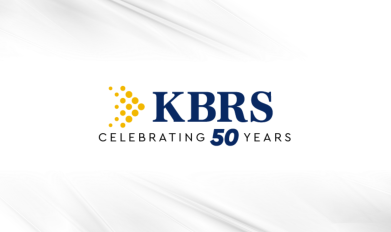Organizations have been advised to pay close attention to “cultural fit” in their hiring practices. Paying attention to a potential employee's fit with your organization, workplace culture or company values has often been touted as the solution to hiring misfires, poor retention, and negative morale. But what do we mean by fit? And how do we decide that a potential candidate doesn’t fit?
One of the dangers that is increasingly on people’s minds is the conflation of fit with sameness and the danger that hiring for fit can often serve as a shield for discrimination and a roadblock for potential job candidates whose social or cultural background, race, ethnicity, gendered identity would make them a minority within your organization. A roadblock, in other words, that might prevent organizations from achieving true diversity within their workplaces.
At its most basic level, “fit” seems to signify that someone has the potential to integrate seamlessly into the group, that they operate from a shared set of values and perhaps that their personalities are similar to those of your most valued employees (who tend to set the tone for discussions of fit). Sometimes fit can mean that a potential employee shares a set of cultural and social touchpoints with a hiring manager or panel, such as attending the same school or even listening to the same music. When it veers into this territory, hiring for fit may be doing more harm than good.
A study that came out a few years ago from Kellogg School of Management showed that interviewers disproportionately extended job offers to candidates with whom they felt they would most enjoy being stuck with in an airport. You often heard people ask, when evaluating two candidates who are similarly well-qualified “well, who would you want to get a drink with?” In its most innocent form this usually just means: "Who did you enjoy talking to?" or "Whose sense of humor or cultural references resonated with you?" Unfortunately, it can also mean that candidates whose cultural or social background or whose gender, ethnicity, and/or race are different from the decision-makers get screened out.
The solution is not to stop assessing for fit - it’s important that a potential employee align in key areas within a corporate culture, however, it is just as important to avoid conflating personal fit (to your own values, personality, or background) with organizational fit and to carefully examine how you are measuring fit in your recruitment and selection process.
So how do you do this?
Start the conversation
To properly assess how you evaluate fit you have to be willing to talk candidly about it. Too often we hide behind jargon or vagueness when discussing what fit means to us, precluding real conversation and the opportunity to talk honestly about who is deemed a “fit” and who isn’t. Look carefully at your hiring process and specifically how it takes into account intangibles, like fit, and encourage others to do the same. Evaluate the potential impact your current process has on the diversity of your workforce. Are you truly growing your organization’s capacity when you add a new hire or just adding more of the same?
Clearly define what allows people to succeed in your organization
If you haven’t already, take the time to define exactly what competencies, behaviours, and personality traits have shown to be most successful in your organization or within a specific department. Strategize ways to assess candidates objectively and persistently against those criteria so that you can avoid relying on a ‘gut check’ or instinct in the midst an interview or screening process.
Clearly define the role and the selection criteria
Define the absolute “must have” criteria for a given role, then define the “nice to haves.” How might a person who comes to the table with the “must haves” but not the “nice to haves” add value in a different way? A search needs to start with a clearly defined job profile that articulates exactly what credentials and experience are necessary for success but doesn’t narrow down the pool to the extent that only those who attended a certain school or moved from one leadership role to the next in a seamless and uninterrupted fashion are screened in. Overly narrowing your profile will leave you with a homogenous group of potential candidates and will hurt any overall efforts you may have in place to diversify your workforce.
Deconstruct your screening process
Setting a clear baseline will help prevent individual hiring managers from screening people based on personal instincts or any implicit similarity bias (which would privilege those who had perhaps attended the same school or grown up in the same neighborhood). Make sure that those who are screening resumes on the front line understand how to assess candidates objectively against your baseline but also feel empowered to think through how a candidate with a non-traditional career path or a gap on their resume might add value in a different way. Even arguably objective criteria such as what school an individual attended or how involved they may have been in volunteer work are closely tied to social class so it’s key not to unquestioningly filter people through these lenses.
It may also help to offer unconscious bias training or trial a “blind hiring” screening process whereby candidates’ names and identifying characteristics are removed from resumes. Even experimenting with a blind hiring process for a short period can help to underline the powerful role that both racial and gender bias can play in resume screening and help to provoke thoughtful conversation around screening processes.
The goal is not to take the human instinct out of hiring but to reemploy it in a different, and arguably more beneficial, fashion – in many cases this will involve moving the needle towards difference and away from similarity.
Question the interview process
Consistency throughout the interview process is one of the key ways to help ensure you are assessing candidates objectively. Develop a set of structured, consistent, and behaviourally based questions and use them with each and every candidate. Think through who is on the interviewing panel or selection committee, what are you telling potential candidates about the types of people you value and trust to make decisions? Do potential candidates see themselves represented in the room? Keeping your interview process structured and consistent and allowing for a diversity of voices in the room will help to steer decision-making away from instinctual affiliations with candidates and towards a more objective assessment of fit.
Don’t throw the concept of fit away, just measure it better
Above all, evaluating for cultural fit, while still a valuable part of your search process, should be done carefully, thoughtfully, and systematically. Imagine it not as a roadblock – preventing candidates who offer diverse perspectives or backgrounds from joining your organization – but as a slalom course, carefully structured and navigated with thoughtful care. The end goal of this process of re-evaluation is that you emerge at the end of the hiring process with a new teammate who offers a fresh perspective on your current challenges and better equips you to provide service to a wider diversity of clients.






